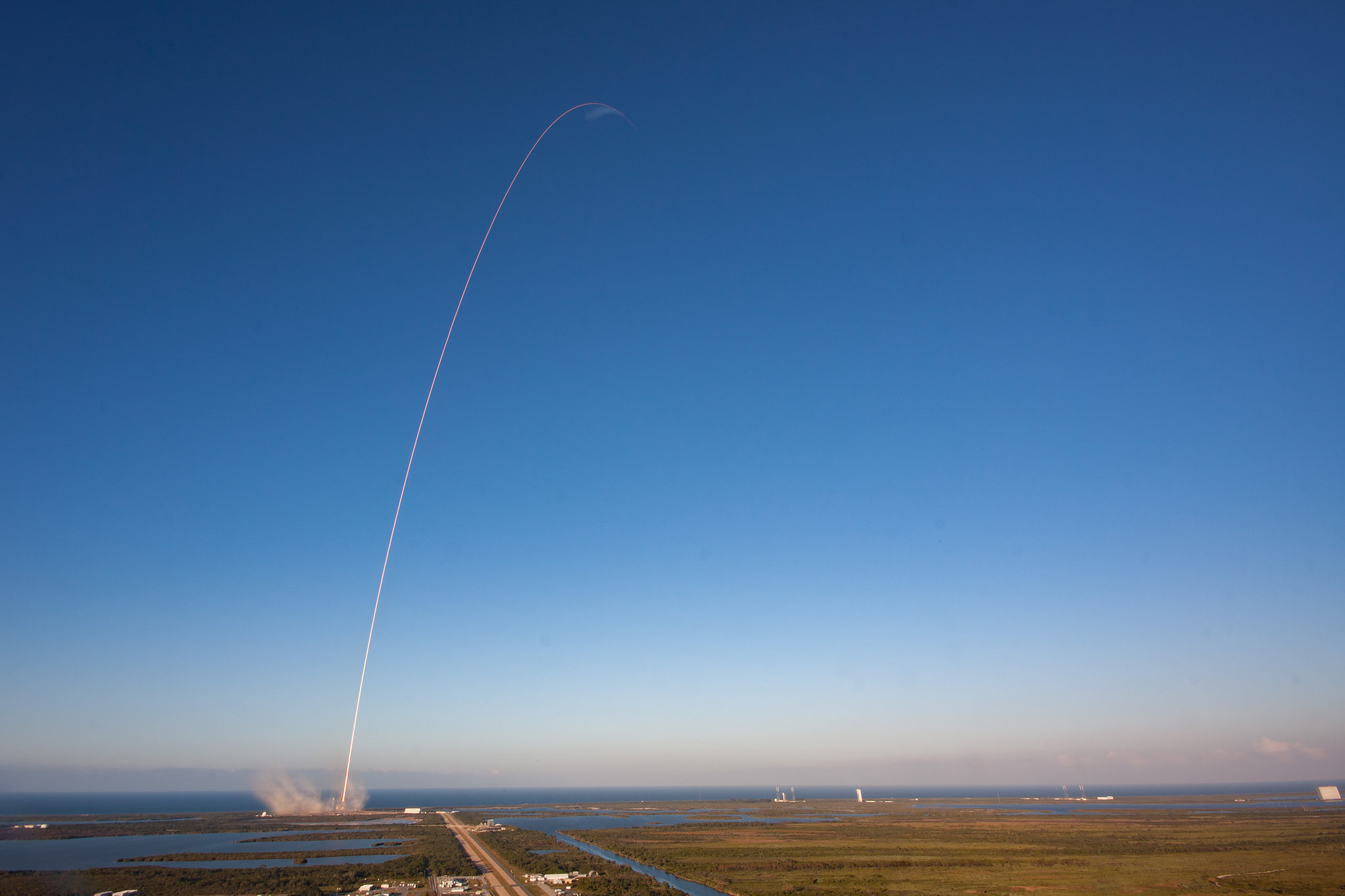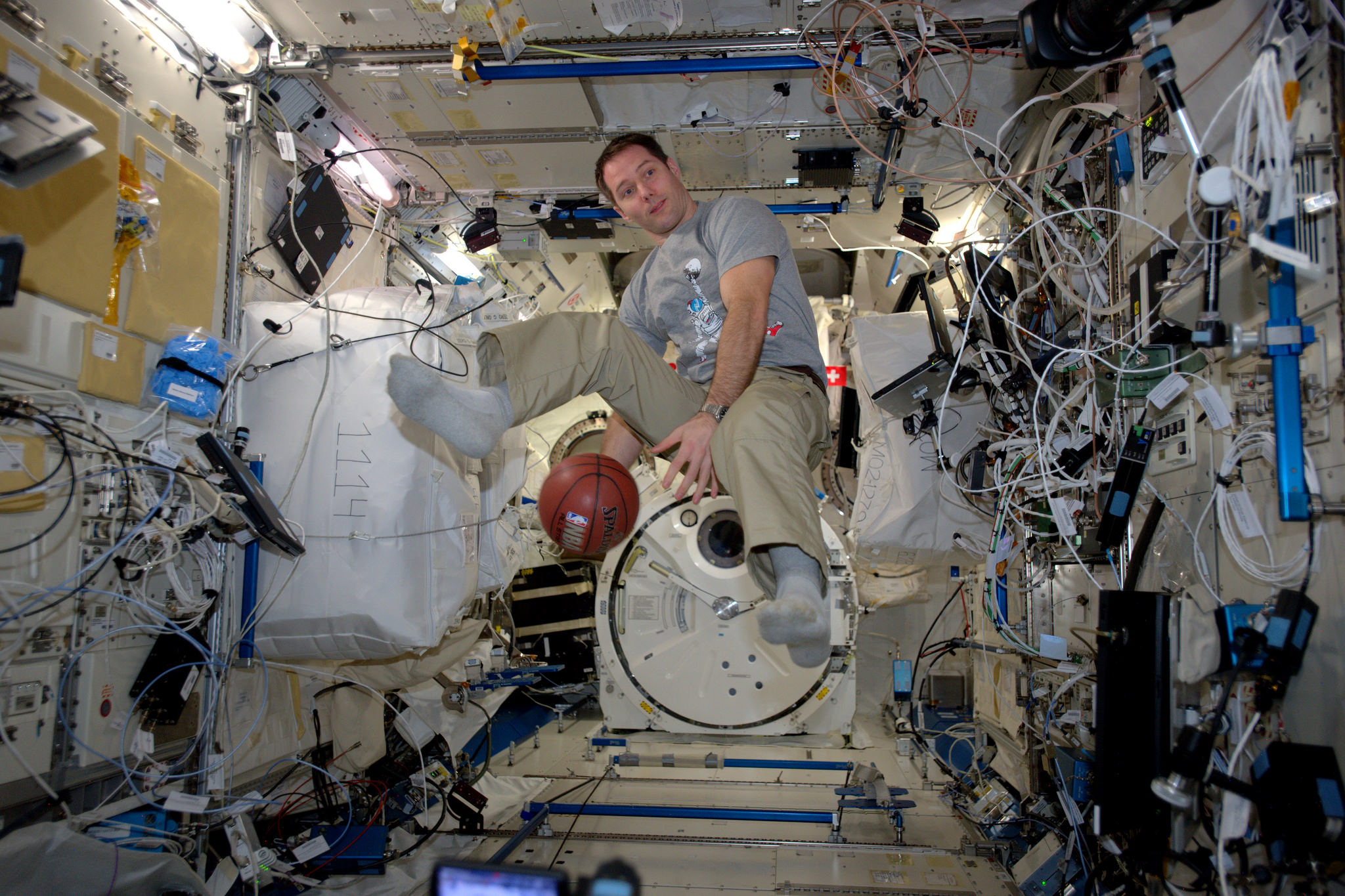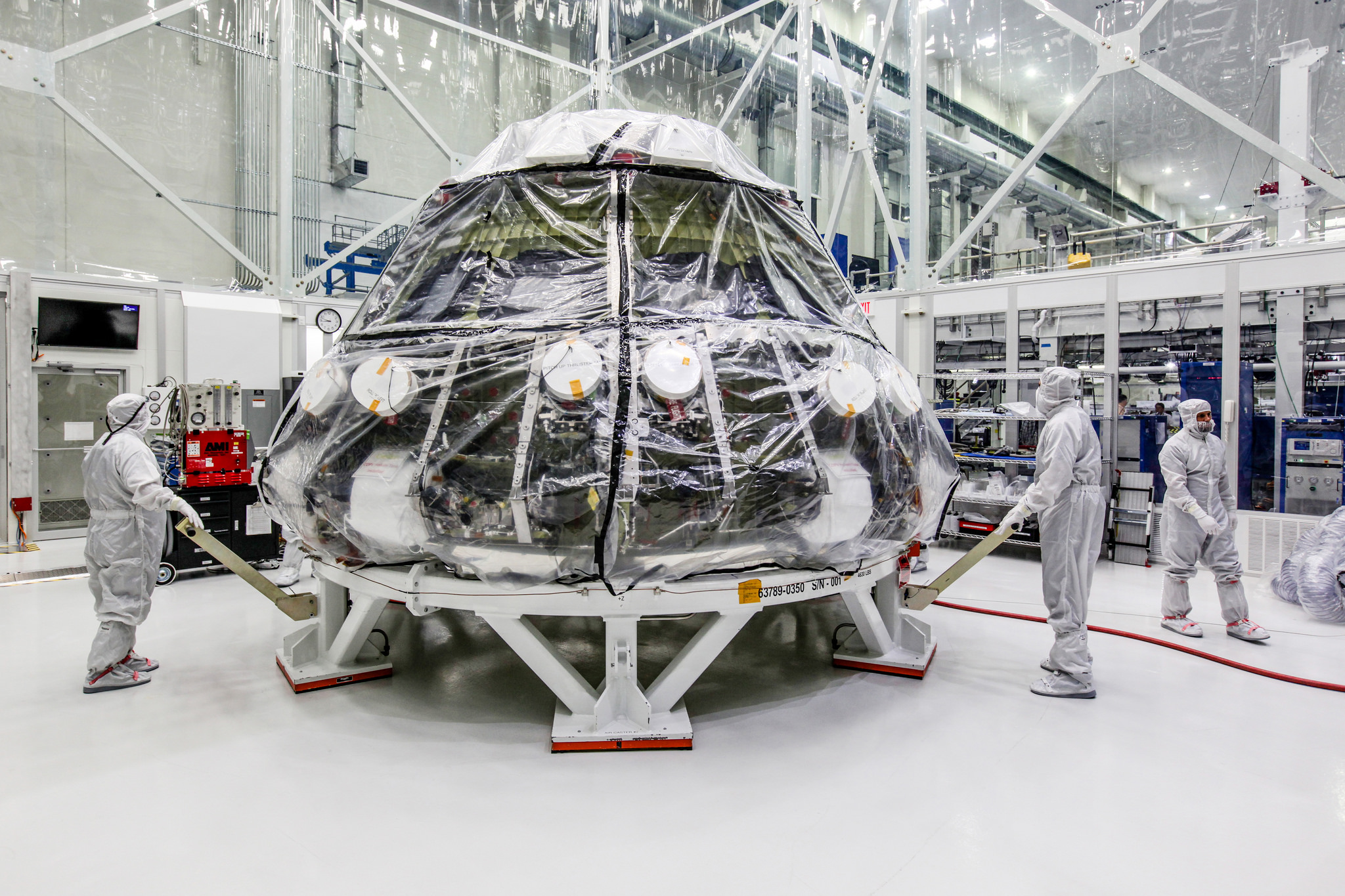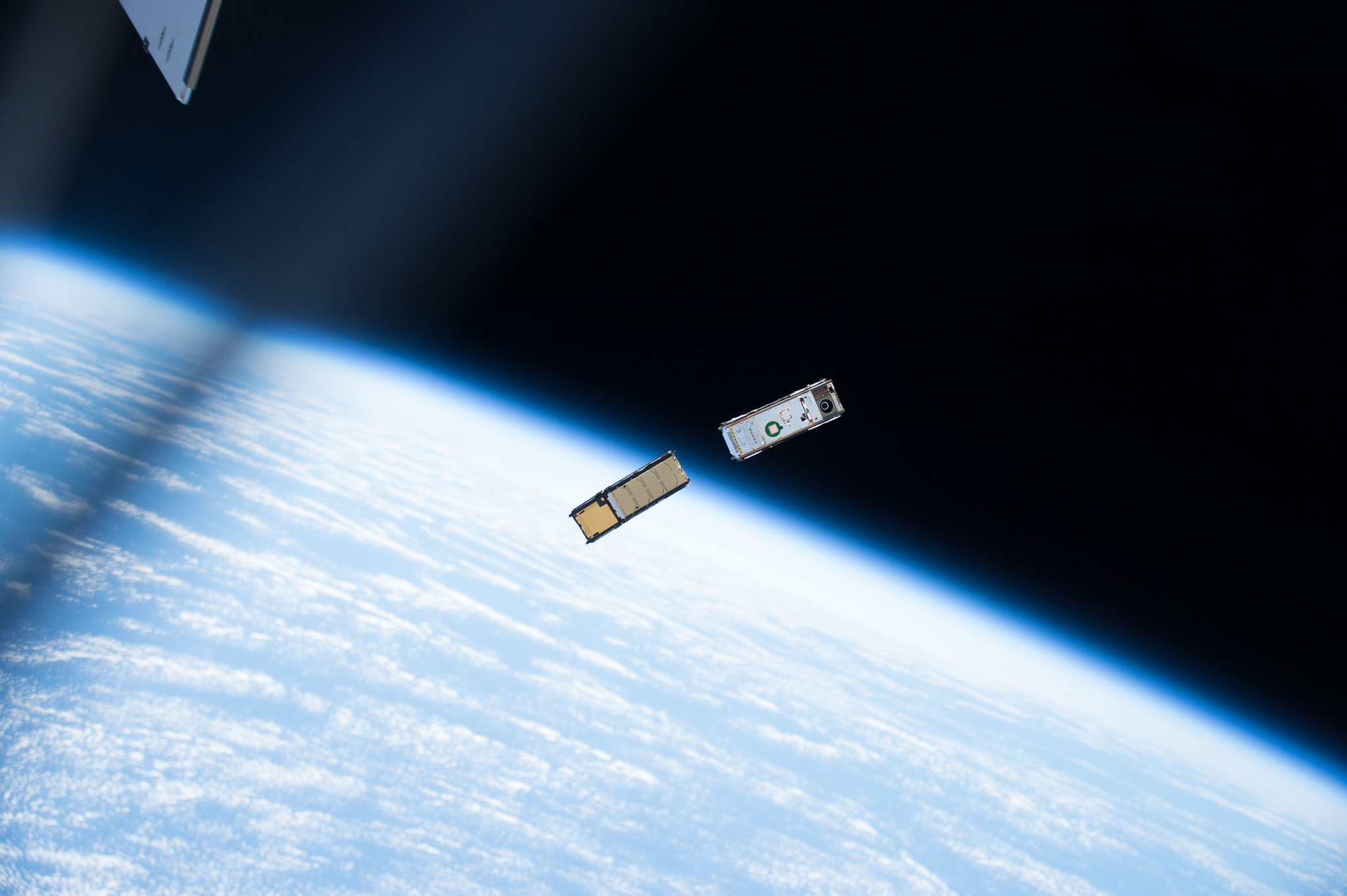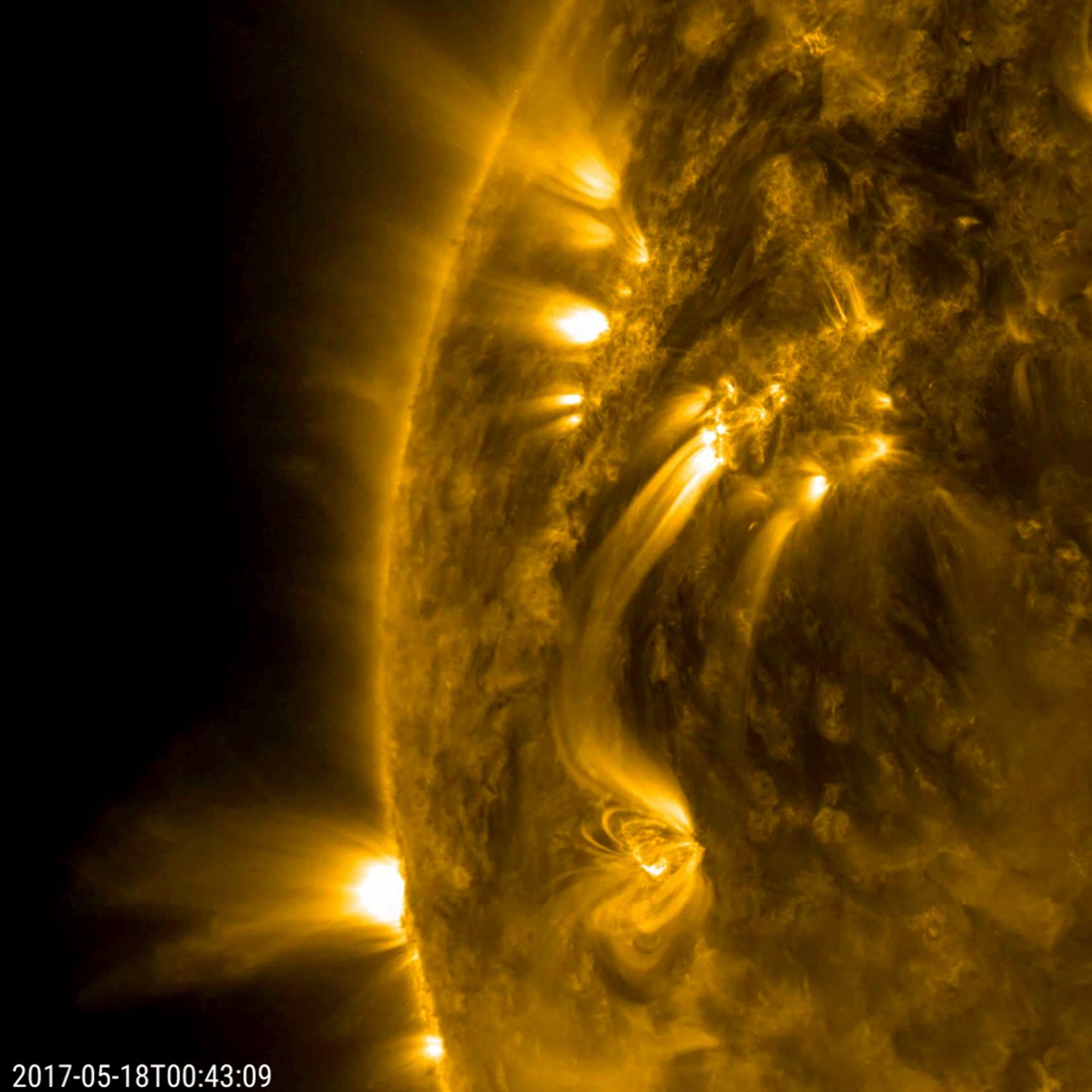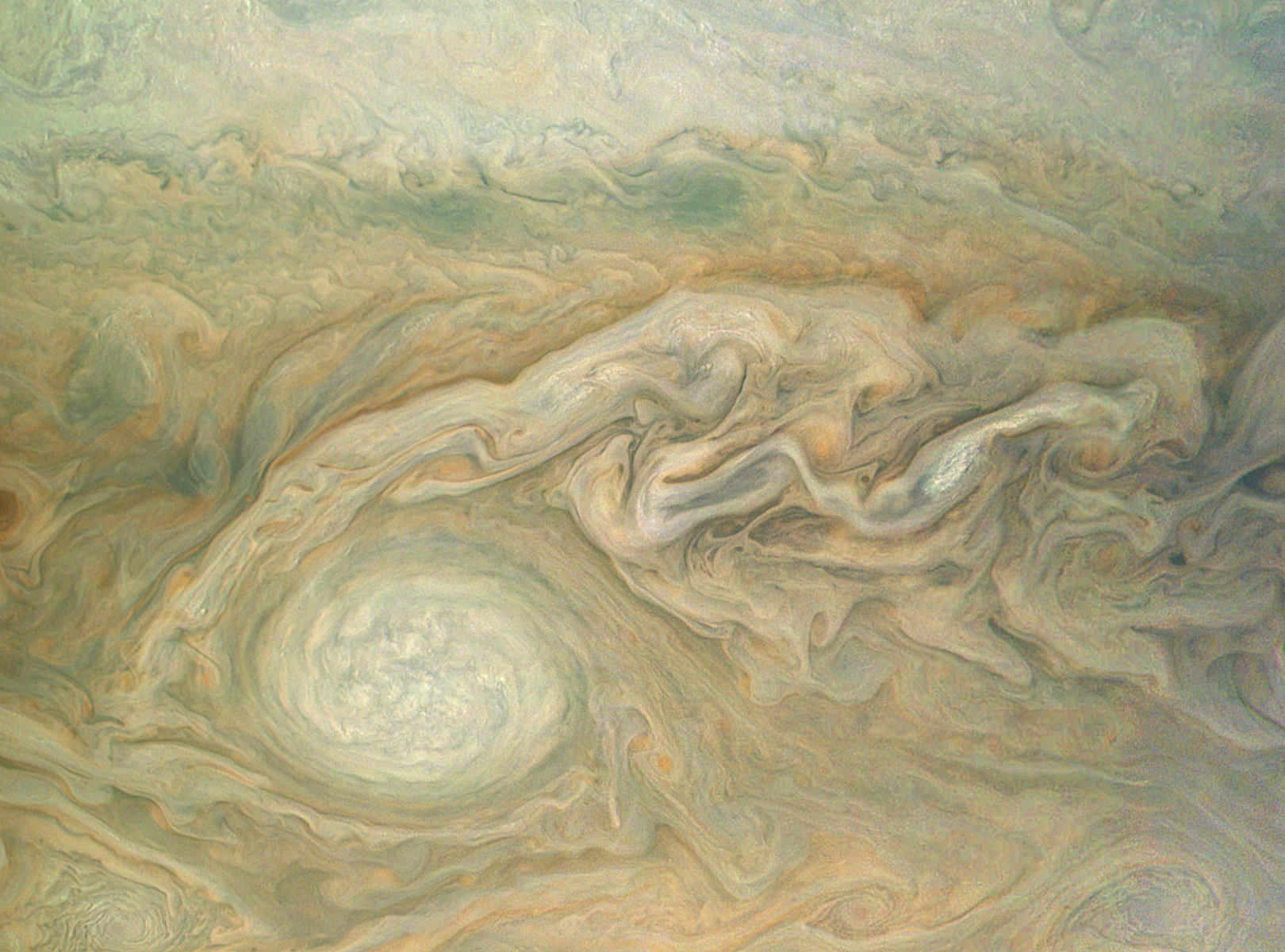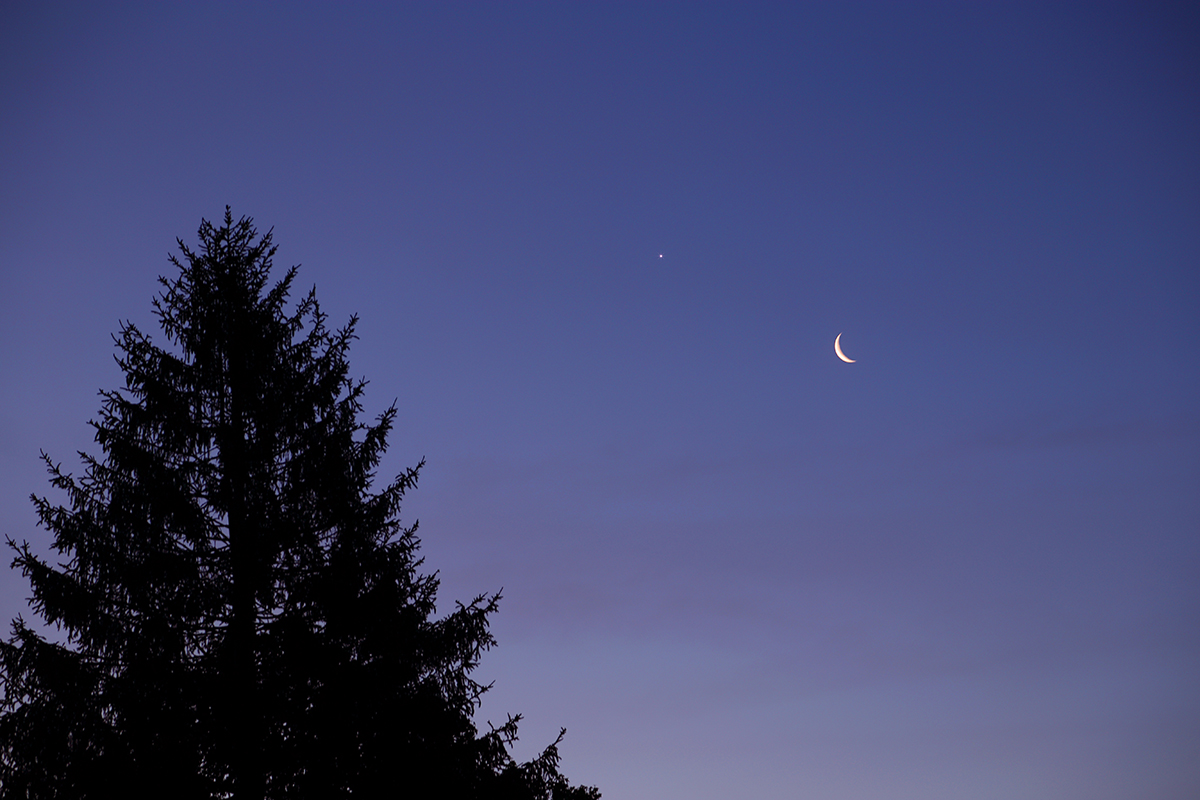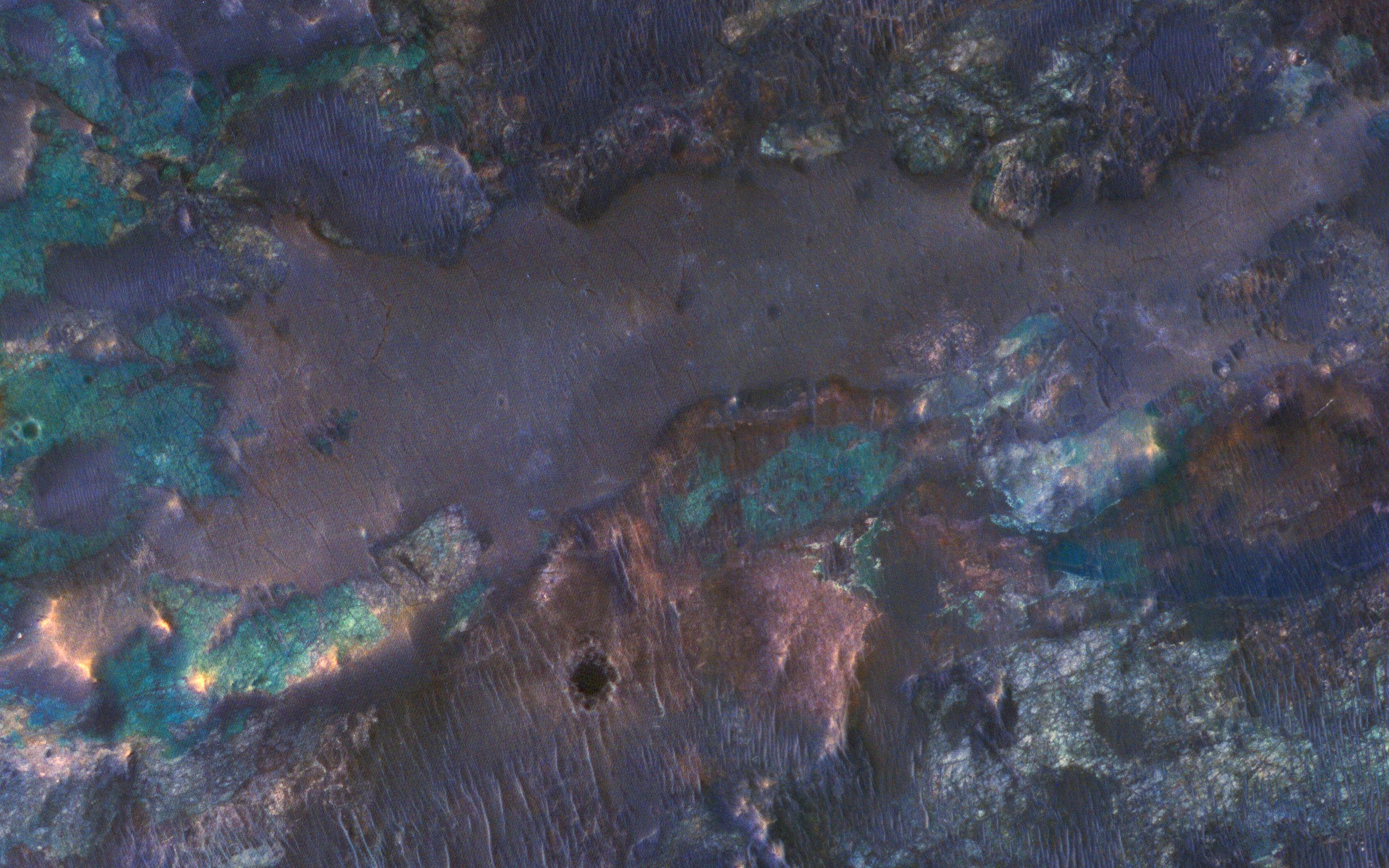Space Image of the Day Gallery (May 2017)
Up, Up & Away!
Tuesday, May 16, 2017:A SpaceX Falcon 9 rocket soars into space carrying the Inmarsat-5 F4 communications satellite following yesterday's launch from NASA's Kennedy Space Center in Florida. This long-exposure shot shows the rocket's curved path as it climbs to an altitude of 22,300 miles (35,800 km) above the Earth, where it delivered the satellite into geostationary transfer orbit. — Hanneke Weitering
Space Ballin'
Wednesday, May 17, 2017: Astronaut Thomas Pesquet practices his basketball skills in a gravity-free environment inside the International Space Station's Kibo module. "Working on my hang time! Only in space could I have been a basketball star," Pesquet tweeted with an animated GIF in which he shows off his cool moves. — Hanneke Weitering
Relocating Orion
Thursday, May 18, 2017: NASA's Orion crew module is all wrapped up and ready to leave the clean room at the Kennedy Space Center in Florida. On May 11, workers moved the spacecraft to the Neil Armstrong Operations and Checkout Building, where it will be prepped for its maiden voyage on the Space Launch System rocket on Exploration Mission 1, which is scheduled for 2019. — Hanneke Weitering
CubeSats Deployed
Friday, May 19, 2017: A pair of tiny satellites called CubeSats are seen in orbit above the Earth shortly after being ejected from the NanoRack CubeSat Deployer at the International Space Station on Tuesday (May 16). — Hanneke Weitering
Solar Activity Spotted
Monday, May 22, 2017: Bands of bright solar plasma, or streams of charged particles, stretch between magnetically active regions on the sun's surface in this image captured by NASA's Solar Dynamics Observatory. The Earth-orbiting spacecraft, which has been watching the sun since 2010, carries a piece of equipment called the Extreme Ultraviolet Variability Experiment to measure strong ultraviolet emissions, allowing it to get clear views of the sun's super-hot corona. — Hanneke Weitering
Little Red Spot
Tuesday, May 23, 2017: NASA's Juno spacecraft captured this sweet view of a storm on Jupiter known as the "Little Red Spot," or NN-LRS-1, during a close orbital approach on Feb. 2. Citizen scientist Bjorn Jonsson used data from Juno's JunoCam instrument to create this enhanced-color view of the storm, which was released May 18. — Hanneke Weitering
Venus and the Moon
Wednesday, May 24, 2017: Venus and the crescent moon dominate the morning sky in this photo by astrophotographer John Chumack. The brilliant celestial pair rose together before dawn on Monday (May 22). Chumack captured this view from his driveway in Dayton, Ohio just a few minutes before 6 a.m. local time. — Hanneke Weitering
Breaking space news, the latest updates on rocket launches, skywatching events and more!
Crescent Ceres
Thursday, May 25, 2017: Ceres, the largest object in the asteroid belt, looks like a crescent moon in this image taken by NASA's Dawn spacecraft. Dawn has spent the last two years orbiting Ceres to study the dwarf planet's composition and evolution. It captured this view of Ceres' south polar region from a distance of about 26,400 miles (42,500 kilometers) on May 17. — Hanneke Weitering
Rainbow Rocks on Mars
Friday, May 26, 2017: An impact site on the surface of Mars looks like a fantastical alien wonderland in this colorful image from NASA's Mars Reconnaissance Orbiter. When a piece of space rock collided with Mars and created Hargraves Crater, the impact broke up several layers of the Martian bedrock and sent it flying in all directions. Because this so-called "impact ejecta" contained rocks of diverse colors, textures and compositions, the result is this multi-colored landscape. — Hanneke Weitering
In the Cupola
Tuesday, May 30, 2017: European Space Agency astronaut Thomas Pesquet hangs out inside the International Space Station's Cupola observatory. The Cupola contains the largest window ever launched to space, providing a broad view of Earth and visiting spacecraft. It also serves as the control room for the space station's robotic arm. — Hanneke Weitering

Space.com is the premier source of space exploration, innovation and astronomy news, chronicling (and celebrating) humanity's ongoing expansion across the final frontier. Originally founded in 1999, Space.com is, and always has been, the passion of writers and editors who are space fans and also trained journalists. Our current news team consists of Editor-in-Chief Tariq Malik; Editor Hanneke Weitering, Senior Space Writer Mike Wall; Senior Writer Meghan Bartels; Senior Writer Chelsea Gohd, Senior Writer Tereza Pultarova and Staff Writer Alexander Cox, focusing on e-commerce. Senior Producer Steve Spaleta oversees our space videos, with Diana Whitcroft as our Social Media Editor.
